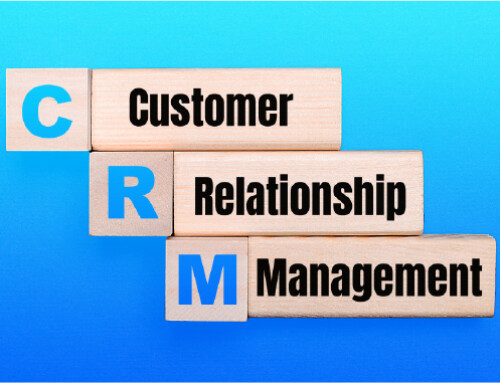Contents
I bet you are pretty excited about your new product. You want to show the whole world what you built and are daydreaming about all the sales you will make. But don’t let emotions control your decisions. You might think the process is, well, make a new product, show it off, and sell it! Pretty easy, right? But that’s not how it actually works. You need to make a ton of decisions before product launch. It’s a lot of work.
A new product needs a launch-plan checklist to make sure you’re on the right track. You need to make sure that people will see your product and appreciate it the way you do. I know you are proud of your business and your new product. But what is the next step? How do you introduce your product to the market? The most important question is, how do you sell it?
In this blog post, I will walk you through the steps you need to take in your product launch process to make sure you have a solid launch plan that will draw in lots of attention and, eventually, profit.
12 Steps on How to Launch A New Product
These twelve steps will help you understand the product launch better. By following these steps, you will have a solid and secure launch plan before, during, and after your new product launch.
1. Define Your Target Audience
This first step is the most crucial. Understand your audience. You need to know different demographics and buyer personas. The language, information, and reach-out channel to each target audience might differ from the other. When you clearly define your audiences, you will better understand how to communicate correctly and market your products to them.
2. Learn How to Reach Your Audience
After defining your target audience, you have to learn how to reach out to them. You can determine what channels to use to reach out to them according to your demographics. You can understand what type of advertising works best with these potential customers. Before your product launch, make sure to include these points in your marketing plan. This is important because you have a clear idea of where and how to market your product to interested buyers when you launch your product.
3. Know the Problem You are Solving
Understanding your audience means understanding their needs. Always make sure your new product solves a problem for your target audience. You have to learn about their challenges in order to design a product that will be beneficial for them to buy and use. Stick to your “who” and “why.” communicate with your audience. Find flaws in similar products in your market and give your new product a solution to make it stand out to your audience.
4. Know Your Competition
Research your competition products. What possibilities can help your new product sell more? Sometimes it’s the quality product pricing, and sometimes it’s as simple as customer service. As I mentioned before, find flaws in your competition. See how you can stand out by acing the parts your competition lacks. This will help your business stand out as well as your new product. Not only will you have a big sale with your new product, but you will also have loyal and returning customers.
5. Understand the Buyer’s Journey
All your marketing and sales revolve around your sales process. You have to understand customers’ pain points in your sales process. Sales automation can help you with having a quick and drama-free sales funnel and your customers with having a seamless and easy purchase experience. A lot of factors can affect your customers’ experience with buying from you. You have to recognize these factors, whether it is your online shop, customer support, follow-ups, or shipping services. Before launching your product to market, you have to make sure your sales process is flawless and comfortable.
6. Make a Prototype and Test It
Before a new product launch, you have to have a product prototype. To make sure you are not marketing a defective product, you have to run tests and trials to find your product flaws and find ways to fix them if necessary. You can hire beta testers to test your product and give you feedback on how seamlessly it works. Any bugs or difficulties have to be addressed and solved before a customer uses your products. Trust me. It is way better to find problems with your products yourself than to get negative quality feedback from your customers.
7. Reconfigure your Product
Once you run tests and trials on your new product, you may hear results that will surprise you, both in good ways and bad ways. You might hear that some features are unnecessary or not working as expected. You may also hear some suggestions to improve your product quality that you didn’t initially think of. Configure your new product according to the feedback you get. This will make sure you have a product that customers not only need but actually want.
8. Pre-market your Product
Having a successful new product launch depends a lot on a successful marketing plan. An effective marketing plan for a new product is to market it before launching. If you build customer interest before your launch, you can win a great deal of engagement with your product. Below are some examples of how you can market your new product before launch:
- Create a landing page for your new product on your website.
- Create an email campaign for your customers to learn more about the new product.
- Reach out to bloggers and influencers in your market that can create content with the goal to tease about the new product.
- Advertise with a “coming soon” context with as many appropriate places as your budget allows you to.
- Create advertising content early to have ad copy and visuals ready for the time of your product launch.
9. Build a Solid Supply Chain
This is the last step you have to take before launching a new product. You have to make sure you have enough product stock for your customers’ demand. In order to do so, you need to build a supply chain. If you have vendors, ask them about the inventory capacity and how many products they can sell at a time. Do the math and make sure you can meet your market’s demand prior to your product launch. You also have to anticipate a plan B if the demand increased more than your inventory at the time of the new product launch.
10. Network and Share your Product
At last! The time has come to launch your new product!
After following all the steps above, set a launch date. Give yourself a week to market your product, three days before and three days after your product launch day. In that week, use all channels possible to network and advertise your product. Update your landing page and set out your email campaign to give updates and information about your new product launch on your launch day. Use as many social media channels as possible (according to your target audience’s activity) to promote your product. Use the three days after your product launch to remind your customers and follow up on your product launch.
11. Reach out to the Press Post-Launch
After launching your new product, you will start to hear from your customers and see reviews. This is a great time to take your customers backstage and share with them the story of your new product’s journey. Reach out to the bloggers and influencers who helped you with posting teasers of your product prior to product launch and ask them to participate in sharing new updates about your product. Customers love to know the story behind the product they are using. Use as many channels as possible to get to word about your product out there.
12. Consider Public Feedback
Everyone from bloggers to customers is talking about your new product. You have to be prepared for customer reviews. You can use websites like Yelp and Google reviews or talk to your customers directly on social media to hear their opinion on your product. Remember, the chances of you hearing negative reviews are out there. No matter how hard you work, you will still be criticized for something. Have an empathetic approach towards negative reviews and don’t take anything personally. You have to be confident in your business and your product, but also be flexible with suggestions or negative reviews on your product.
This guide is your product roadmap and launch plan. If you follow these steps accordingly, you will have a successful product launch. I also have some tips that will help you out if you get confused in the process.
Product Launch Tips And Tricks
There are three main tips that will help you have a successful product launch:
- Plan as early as 8 to 12 weeks before your product launch. Don’t wait until the last minute.
- Find bloggers and influencers according to your market. Investing in advertising through a blogger that doesn’t represent your target audience will have the least amount of ROI.
- Keep realistic expectations. Don’t get discouraged if you didn’t have a flood of demand for your product on your launch date.
While you follow every step and do everything correctly, there are external factors that can affect your product launch. When that happens, the best thing you can do is delay your product launch.
Delaying A Product Launch
This is are how you’ll know it’s not a good time for a new product launch. Don’t launch when:
- When your product itself is not ready, delay your product launch until you are entirely sure customers will be satisfied with your new product.
- When customers are not satisfied with a current product, sometimes before launching a new product, you have to make sure your current customers have a satisfying experience with your business and current products.
- When an international, national, or local event makes a shift in your customers’ attention. When something like a natural disaster happens, it’s definitely not the time to launch a new product — unless it’s something that actually saves lives.
To Wrap It All Up
Launching a new product is the most exciting part of running a business. Following this guide will ensure you have the time of your life with your product launch. I know it takes a lot of time and effort to launch a product. But when you see customer satisfaction and good results, all the trouble will make sense. Make sure everything is prepared for your new product to launch. But also know that you have room for error. As a business owner, you have to have a good sense of management if something goes wrong during launch. You can always move things around or cut out a few steps, which takes flexibility. Just remember to make sure there aren’t any hurricane forecasts for the time of your product launch!
Disclaimer: The content provided on this blog is for informational purposes only and does not constitute legal, financial, or professional advice.






